Comet Tsuchinshan-ATLAS (C/2023 A3) anti-tail
Posted: 14 October 2024
A few minutes after local sunset (1751 MST) on Sunday, 13 October 2024, I went outside to begin my Comet Tsuchinshan-ATLAS (C/2023 A3) observing session.
1829 MST: Spotted the comet in the bright twilight sky using 7x50 binoculars.
1835 MST: The comet was now faintly visible to the naked eye.
1842 MST: Using the binoculars, the comet's tail appeared about 5° long.
1850 MST: As the sky darkened, the tail appeared about 10° long to the eye.
1915 MST: With the comet getting low in the western sky, I ended my comet observing.
These photographs are shown in chronological order. To the eye the comet was much fainter than these long exposure photographs.
1838 MST: D850 DSLR (f/5.6, 2 seconds, ISO 800, FL 70mm)
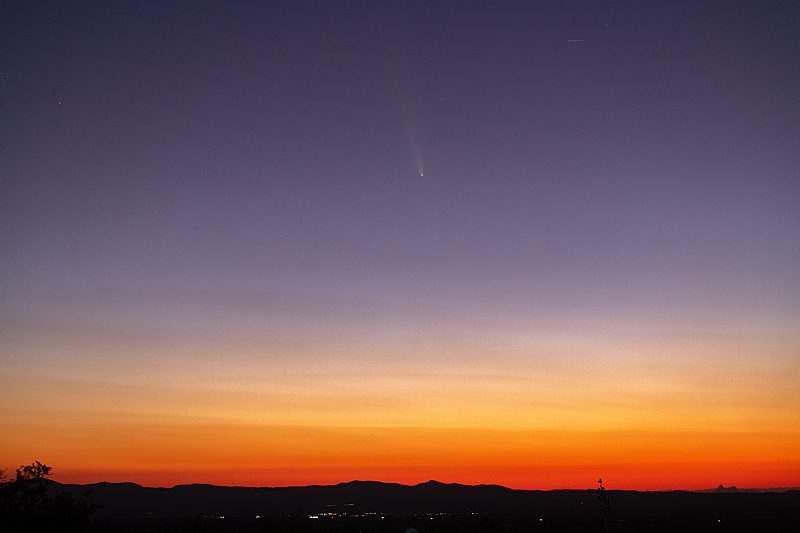
1845 MST: D850 DSLR (f/5.6, 2 seconds, ISO 1600, FL 70mm)
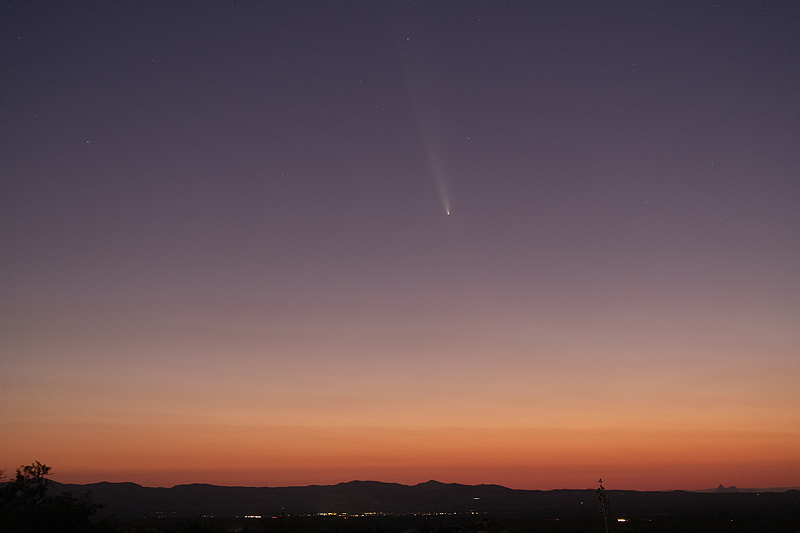
1847 MST: iPhone 15 Pro Max (3 seconds, 2X lens, slight horizontal crop) - ANTI-TAIL!
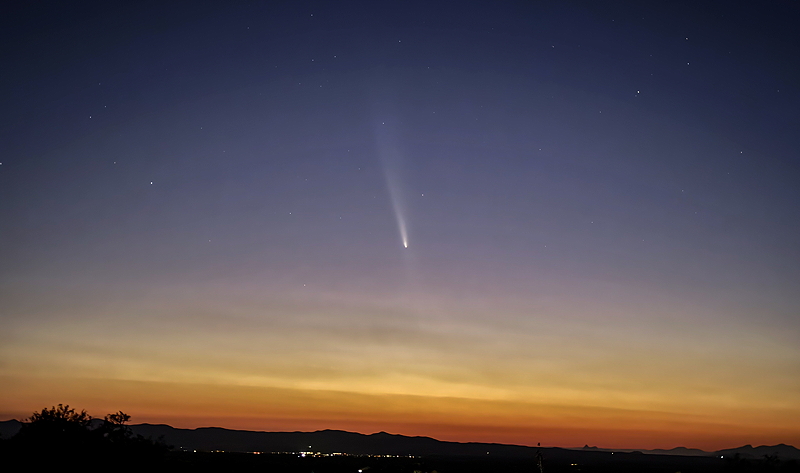
1849 MST: iPhone 15 Pro Max (10 seconds, 5X lens) - ANTI-TAIL!
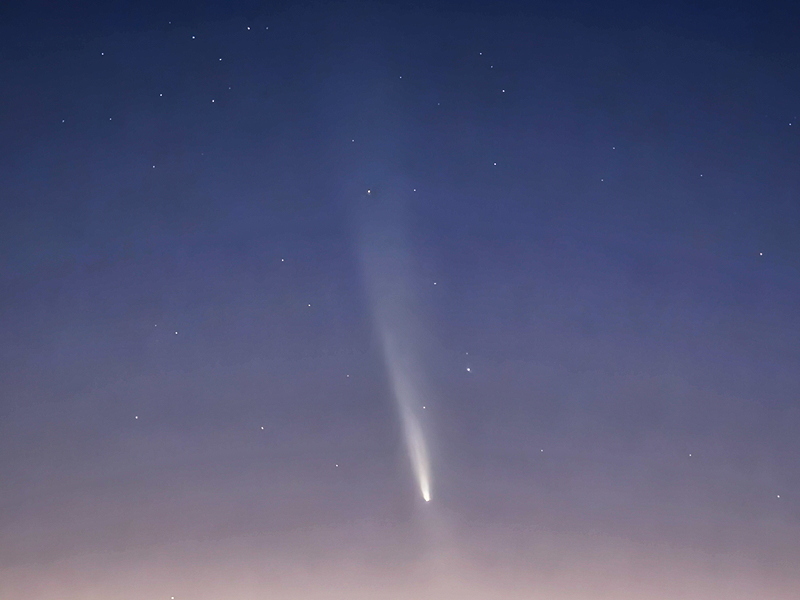
1851 MST: D850 DSLR (f/5.6, 2 seconds, ISO 3200, FL 70mm) - ANTI-TAIL!
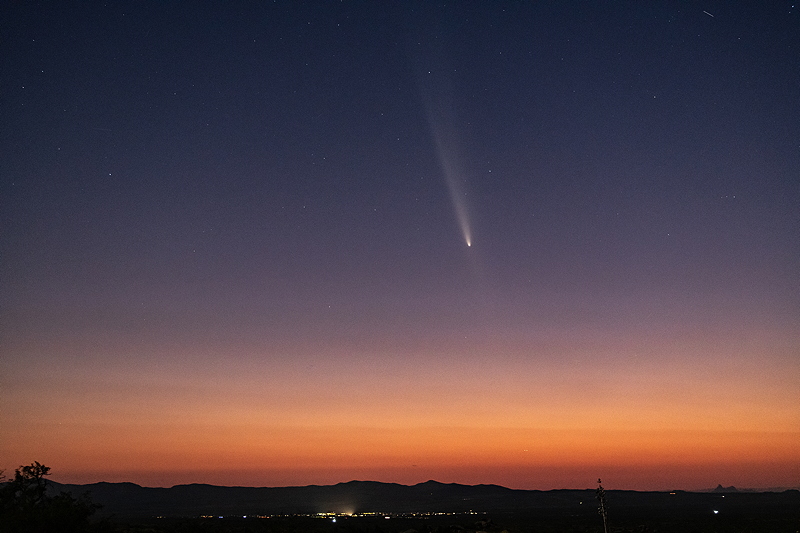
1856 MST: D850 DSLR (f/5.6, 2 seconds, ISO 6400, FL 70mm) - ANTI-TAIL!
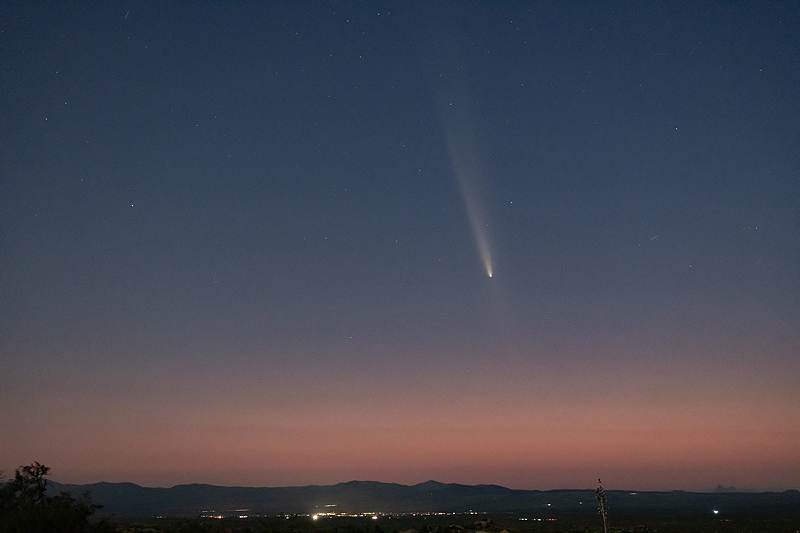
1901 MST: iPhone 15 Pro Max (10 seconds, 2X lens, slight horizontal crop) - ANTI-TAIL!
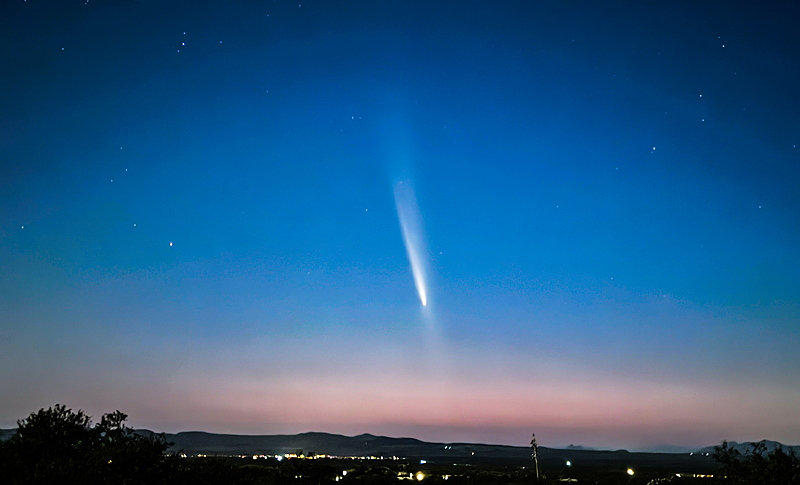
1904 MST: D850 DSLR (f/5.6, 4 seconds, ISO 6400, FL 92mm) - ANTI-TAIL!
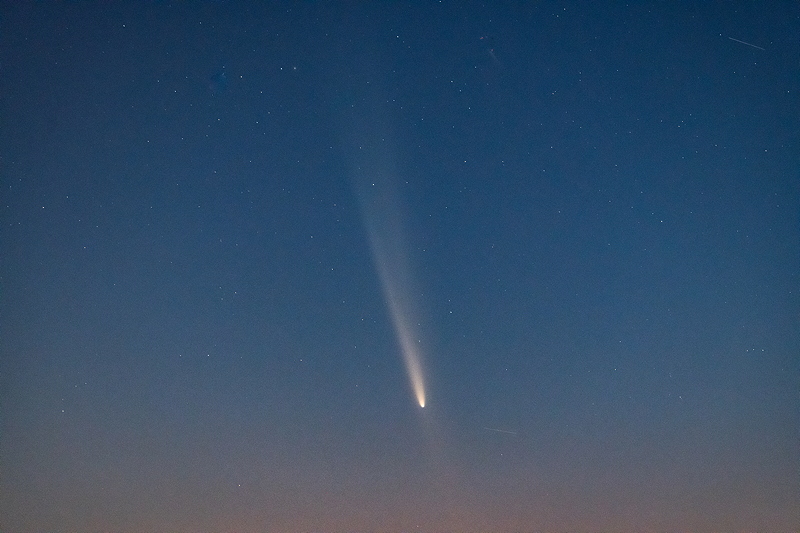
1907 MST: iPhone 15 Pro Max (10 seconds, 2X lens, slight horizontal crop) - ANTI-TAIL!
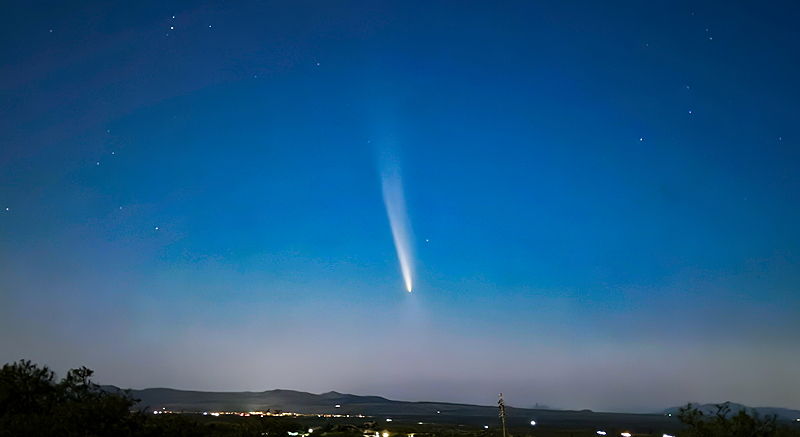
1913 MST: D850 DSLR (f/5.6, 4 seconds, ISO 6400, FL 92mm) - ANTI-TAIL!
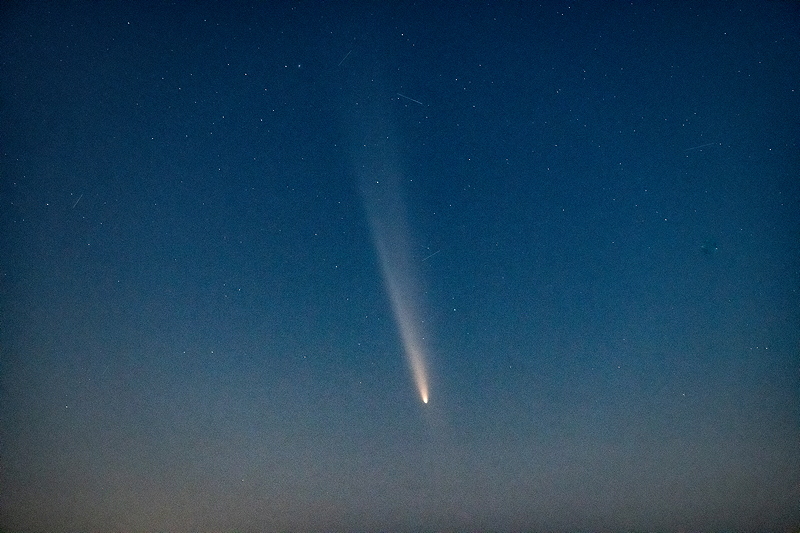
It was exciting to capture the comet's anti-tail and to have it appear so bright (photographically). A comet's anti-tail is an optical illusion (of the dust tail) and appears only during a brief period when the comet passes through the plane of the Earth's orbit around the Sun.
Comments are welcome using Email. Please read the Email Etiquette guidance.
Cassiopeia Observatory Home Page
Copyright ©2024 Michael L. Weasner / mweasner@mac.com.
URL = http://www.weasner.com/co/Reports/2024/10/14/index.html
